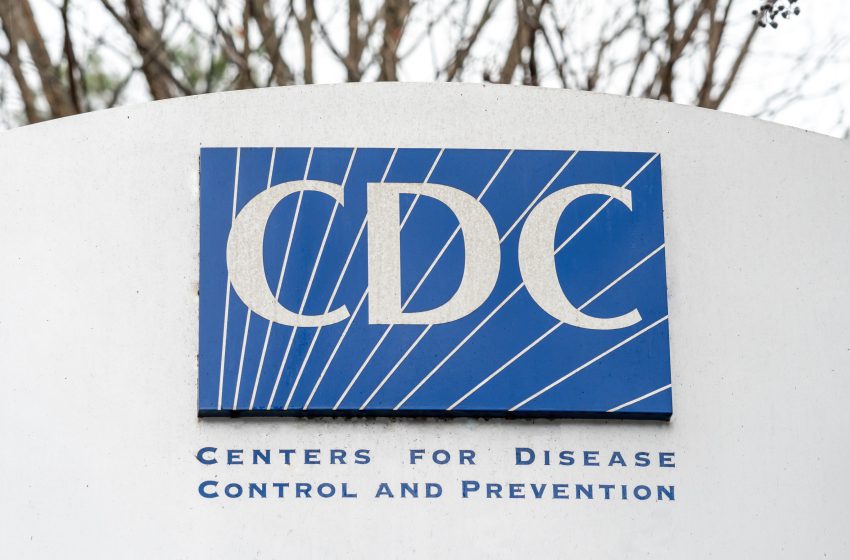
Eve Wang, vice president of the world’s largest atomization company, shares her vision for vaping.
By Timothy S. Donahue
The largest atomization company in the world is Shenzhen Smoore Technology Co. Based in Shenzhen, China, the company has maintained its position as the global leader in the atomization technology market since the beginning years of the vaping industry.
Smoore has seen significant growth since its establishment in 2009 and operates three atomization businesses: nicotine delivery (including vaping and heat-not-burn), medicinal applications and healthcare.
Within the nicotine-delivery business, Smoore’s technology brand, FEELM, holds a prominent position as one of the industry’s leading closed-system vaping solution providers. This diverse business structure allows Smoore to deliver innovative solutions across multiple industries to meet several varied consumer needs.
Earlier this year, the international ESG rating agency Sustainalytics awarded Smoore International Holdings, parent of the FEELM and Vaporesso brands, the top position among global electronic atomization companies. Smoore consistently ranks first among global electronic atomization companies in the ESG ratings published by MSCI, the world’s largest index company.
Vapor Voice invited Eve Wang, vice president of Smoore, to share her vision for the vaping industry and her insights into how Smoore will move forward as atomization technology continues to improve and develop into various marketplaces beyond the vaping industry.
Vapor Voice:As an atomization technology solution provider, how important are Smoore’s investments in R&D?
Eve Wang: Centered on Smoore’s mission of atomization makes life better, we have a long-term approach to everything we do and believe that continuous technological innovation is the only approach to develop the atomization industry. Last year, Smoore invested £160 million ($199.5 million) in R&D, which accounted for 11.3 percent of the total revenue in 2022. This investment has resulted in 2,254 new patent applications worldwide, including 1,125 invention patents.
Our commitment to continuous technological advancement is best shown by the fact that we employ 1,500 R&D personnel, which accounts for more than 40 percent of our entire nonproduction workforce.
As a young and developing industry, constant R&D in both technology and manufacturing is vital to drive growth and ensure the highest quality standards. Our professional testing facilities feature more than 700 different types of testing equipment, valued at over £23 million, and we have many partnerships with leading research institutes and analysis laboratories to complement our already comprehensive testing capabilities. We have developed the world’s first fully automation pods production line, and our ceramic coil disposable automation line is not only the world’s fastest but also allows our products manufactured by FEELM to achieve a first pass yield of over 99.5 percent.
Looking toward the future, Smoore is exploring how to apply vape atomization technology within the healthcare sector, and our dedication to cutting-edge research and development, regulatory compliance and superior consumer experience supports our commitment to the longevity and sustainable growth of our business.
Is Smoore seeking to invest beyond the vaping industry?
We keep exploring the boundaries of innovation and the application of atomization technology in new application scenarios, such as medicinal and healthcare sectors. For example, last year in China we registered a ventilator in combination with an atomization drug delivery device and successfully obtained the production license for this technology.
We have also set up a team in the United States which has developed two drug delivery devices targeting asthma and chronic obstructive pulmonary disease and started the development of relevant medicinal preparations.
How do you see the vapor industry developing, and what will be the biggest growth areas in terms of technology and geography?
According to a report by Frost and Sullivan, the global retail market for e-vaporization is expected to reach $122.2 billion by 2027. It is expected that in the long run, companies that prioritize regulatory compliance and harm reduction while also focusing on consumer experience will emerge as the ultimate winners.
However, as an emerging industry aimed at assisting smokers toward a smoke-free society, e-cigarettes are still in their infancy and face a range of challenges which makes it crucial for all stakeholders in the industry to collectively provide the best possible harm reduction solutions for current adult smokers.
Therefore, we have developed and launched a new 2 mL e-liquid compliant disposable solution to provide 800 puffs with the innovative technology FEELM Max, where conventional products typically provide around 600 puffs.
How is the FEELM Max technology different from that used in conventional products?
As the world’s first ceramic coil disposable solution, FEELM Max benefits from a cotton-free design that, with a compliant e-liquid volume of 2 mL, can provide 800 puffs whilst current solutions offer 600 puffs. This is a significant step toward setting a new industry compliant benchmark for 2 mL.
In addition to more puffs, this innovative heating technology is designed to bring cleanness and silkiness, ensuring a satisfying experience for consumers. Our constant power technology provides a vapor and taste consistency, and together with a transparent e-liquid tank design offers an enhanced consumer experience.
The ceramic coil is like an electric car, symbolizing a more advanced technology. Several major brands have already adopted our new technology, recognizing that differentiation is key in a competitive market. We are committed to providing superior vaping experiences that meet the evolving needs of consumers around the world.
What is the largest market for Smoore and its subsidiary’s products?
In 2022, Smoore’s global enterprise customer business revenue was £1.22 billion, with the U.S. market ranking first, accounting for 35.4 percent. The revenue share of Europe and other markets increased from 24.1 percent in 2021 to 43.6 percent in 2022, up by 19.5 percentage points. Smoore will continue to provide technology solutions and products worldwide, all tailored to fully comply with all local regulations.
What are Smoore’s concerns about the growth of noncompliant products in the marketplace?
We believe that effective regulation is vital for sustainable growth and that proportionate regulation can support the industry’s evolution.
However, the presence of noncompliant or counterfeit products entering the U.K. market is a significant concern for us. These products not only pose potential health risks to consumers but also bring negative effects on the long-term development of the vaping industry. These illicit products can discourage innovation and deter potential investments in research and development, hindering the industry’s ability to evolve and improve.
Like any industry, there are always those who operate illicitly. However, it is vital that the responsible majority within our sector, together with government, regulators, enforcement bodies, trade associations and partners, collaborate on initiatives and share intelligence to eradicate illegal and noncompliant vapes. This collective effort is necessary to ensure that the sector’s reputation is not only maintained but also improved.
We believe in maintaining the very highest product standards whilst also being fully compliant in all local markets in which we operate. That’s why we have developed and launched the 800-puff compliant disposable vape: FEELM Max. FEELM Max represents a commitment to both technological innovation and regulatory compliance, moving the vaping industry forward in a responsible and sustainable way.

Many vapor products that have been authorized for marketing in the U.S. were developed by Smoore. What is the secret behind Smoore’s high share of Food and Drug Administration marketing orders?
Smoore is always committed to full regulatory compliance and product quality. In 2022, out of over 6.7 million e-cigarette product listing applications, the FDA only approved eight from JTI, nine from R.J. Reynolds Tobacco and six from Njoy. Smoore, as the atomization technology manufacturer, has aided the most clients in the ENDS [electronic nicotine-delivery system] category to pass the PMTA [premarket tobacco product application] process.
Last September, Smoore had the distinction of being invited to an industry meeting convened by the commissioner and director of the Center for Tobacco Products. We actively engaged in explorations and discussions regarding the future of a more compliant and sustainable vaping industry.
Smoore’s achievements stem from the long-term focus on the improvement of atomization technology and the commitment to innovation, compliance and product safety; we always deliver user-centric and user-friendly technologies and products to clients, consumers and industry.
As the FDA commented when approving one of the closed-system pod vaping products: “It met the standard because, in several key considerations, chemical testing is sufficient to determine that the levels of harmful and potentially harmful constituents in the aerosol of these products are lower than those in the smoke from combusted cigarettes.”
What is Smoore/FEELM’s strategy for the disposable market?
The disposable vape has been a widely accepted product in the e-cigarette market. Even as far back as 2018, when closed-system vapes dominated the industry with a 72 percent market share, it was predicted that disposables would account for more than 70 percent of the closed-system market over the next five years.
However, such rapid growth inevitably leads to challenges, and the market has seen a proliferation of noncompliant products and counterfeits, coupled with problems such as the illegal overfilling of e-liquids and the quality issues from the black market, as reported by the BBC. These issues have sounded alarm bells across society, calling for superior, compliant and healthier solutions.
How will Smoore confront the challenges associated with disposable products, such as environmental concerns?
As the first Chinese e-cigarette company to be included in the Dow Jones Sustainability Index, Smoore aims to minimize any environmental impact from our operations and products as much as possible.
In May 2022, we officially launched our carbon neutrality plan, setting a net-zero target by 2050. We will continue to increase the use of renewable energy in our operations, aiming for 50 percent energy consumption from renewable sources by 2030.
Whenever I come across a discarded disposable vape on the ground, I will pick it up and bring it back to the company, where my colleagues can professionally process and recycle it. But more needs to be done to encourage active participation by consumers in recycling their vapes. Therefore, we have launched the industry’s first end-to-end whole-chain recycling scheme, including manufacturers, brands, retailers, the Royal Mail and waste management specialists, Waste Experts.
Working closely with our clients, we have created a household collection service whereby consumers who return 10 or more old disposable vapes for recycling will receive a free disposable product incorporating our latest technology as a reward.
What do you consider to be Smoore’s greatest industry innovations?
The cotton coil is widely adopted within the vaping industry, and there are many challenges that affect the consumer experience.
Smoore drew inspiration from traditional Chinese ceramic making to develop the ceramic technology. We discovered that, compared to the cotton coil, the ceramic coil has advantages such as high thermal efficiency, leakage prevention and the ability for planned automated production as well as delivering strong taste consistency.
Therefore, in 2014, Smoore initiated research into ceramic heating technology, and in 2016, Smoore’s ceramic coil technology brand FEELM was officially launched in the market, aiming to “feel the moment of vaping” and representing our long-term commitment to vaping sensory and technology. Today, FEELM has already become a very well-recognized tech brand by the industry, especially for ceramic coil technology. Since 2018, we have shipped over 3.5 billion pod products worldwide, and we cover more than 50 different countries and regions.
We remain devoted to our mission of improving public health through the advancement of atomization technology.
What are the greatest challenges facing the global e-cigarette industry, and how is Smoore helping solve those challenges?
Smoore recently commissioned a survey, which was conducted by One Poll, among 2,000 adult smokers. The results revealed that 42 percent of respondents had little or no trust in e-cigarettes. Meanwhile, nearly two-thirds (62 percent) believed that e-cigarettes were more harmful or at least as harmful as traditional cigarettes whereas evidence from the Office for Health Improvement and Disparities highlights that e-cigarettes are at least 95 percent less harmful than smoking.
That’s why we have established an independent panel of experts in science, smoking cessation and compliance to look at creating a new rating system that will allow adult smokers and vapers to make informed decisions about their choice of vapes based on their harm reduction profile.
We are committed to innovating alternatives to traditional smoking, to reducing harm and to benefit public health. We strongly believe in the potential of e-cigarettes to provide a viable and less harmful alternative for smokers who struggle to quit.
Smoore hopes to fulfill our mission: Atomization makes life better—better for our clients and consumers. We aim to achieve this by providing better technological solutions and products in the future in novel tobacco, medicinal and healthcare fields.






















